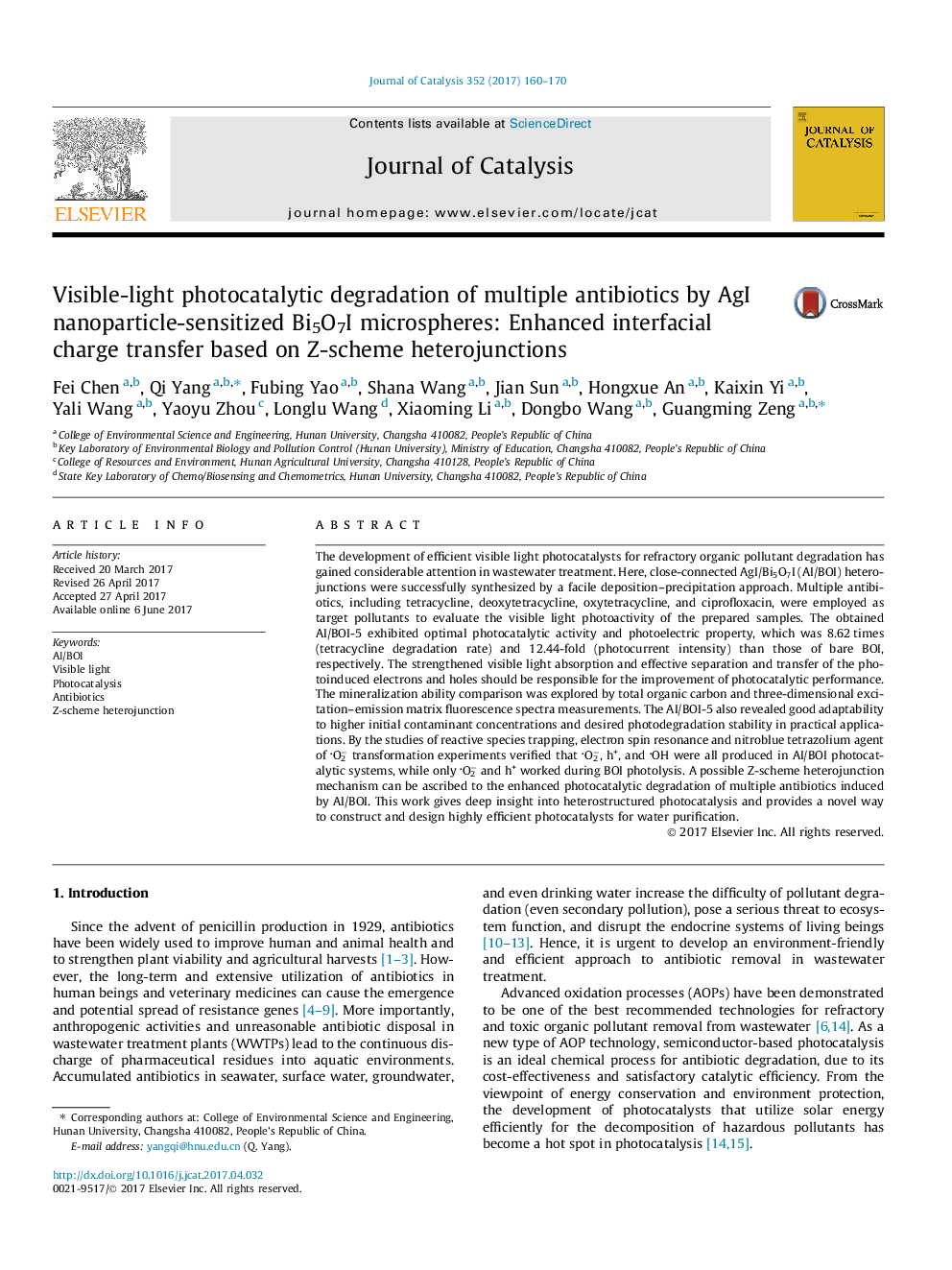| کد مقاله | کد نشریه | سال انتشار | مقاله انگلیسی | نسخه تمام متن |
|---|---|---|---|---|
| 6455362 | 1419757 | 2017 | 11 صفحه PDF | دانلود رایگان |

- AI nanoparticle-sensitized BOI microspheres were successfully synthesized.
- The prepared photocatalysts exhibited excellent visible-light photocatalytic performance.
- Higher antibiotic adaptability and superior photostability were confirmed.
- Enhanced visible light absorption and photoinduced charge separation were achieved.
- A possible Z-scheme heterojunction degradation mechanism was proposed.
The development of efficient visible light photocatalysts for refractory organic pollutant degradation has gained considerable attention in wastewater treatment. Here, close-connected AgI/Bi5O7I (AI/BOI) heterojunctions were successfully synthesized by a facile deposition-precipitation approach. Multiple antibiotics, including tetracycline, deoxytetracycline, oxytetracycline, and ciprofloxacin, were employed as target pollutants to evaluate the visible light photoactivity of the prepared samples. The obtained AI/BOI-5 exhibited optimal photocatalytic activity and photoelectric property, which was 8.62Â times (tetracycline degradation rate) and 12.44-fold (photocurrent intensity) than those of bare BOI, respectively. The strengthened visible light absorption and effective separation and transfer of the photoinduced electrons and holes should be responsible for the improvement of photocatalytic performance. The mineralization ability comparison was explored by total organic carbon and three-dimensional excitation-emission matrix fluorescence spectra measurements. The AI/BOI-5 also revealed good adaptability to higher initial contaminant concentrations and desired photodegradation stability in practical applications. By the studies of reactive species trapping, electron spin resonance and nitroblue tetrazolium agent of O2â transformation experiments verified that O2â, h+, and OH were all produced in AI/BOI photocatalytic systems, while only O2â and h+ worked during BOI photolysis. A possible Z-scheme heterojunction mechanism can be ascribed to the enhanced photocatalytic degradation of multiple antibiotics induced by AI/BOI. This work gives deep insight into heterostructured photocatalysis and provides a novel way to construct and design highly efficient photocatalysts for water purification.
95
Journal: Journal of Catalysis - Volume 352, August 2017, Pages 160-170